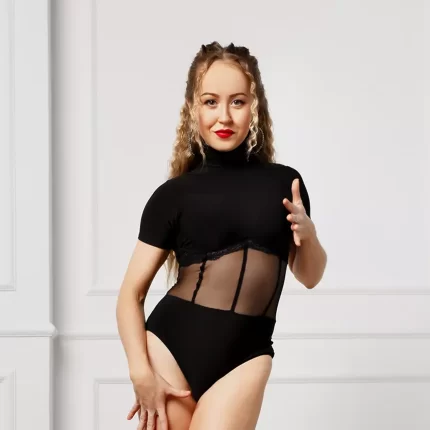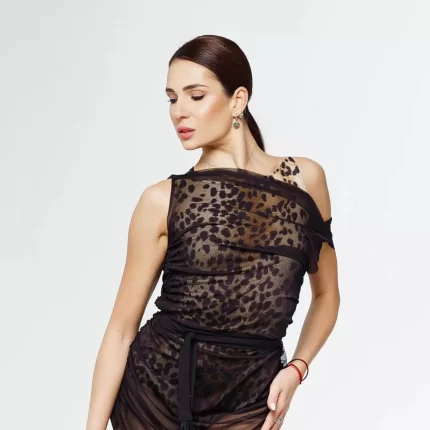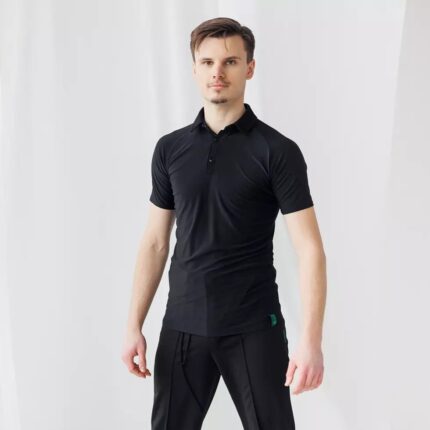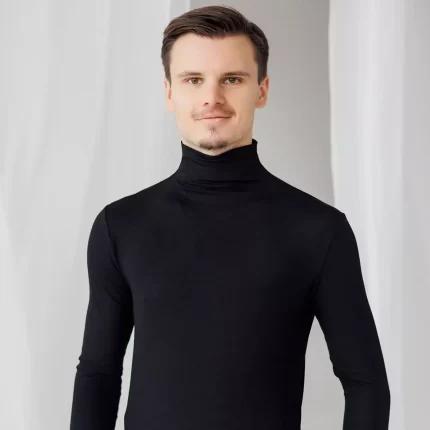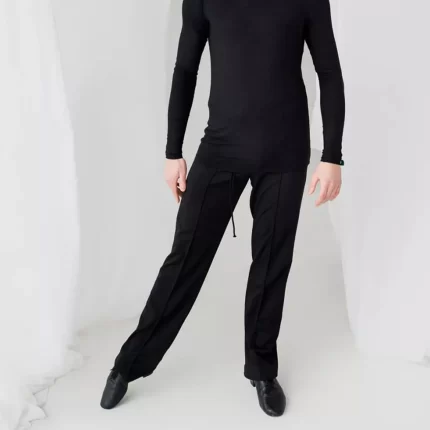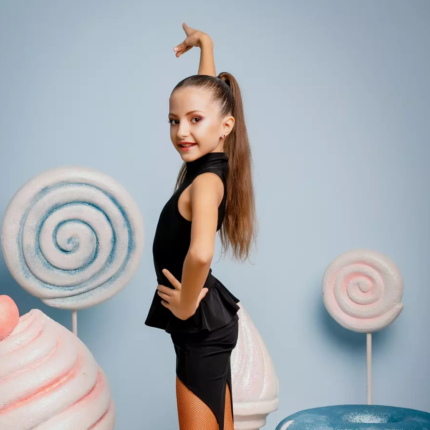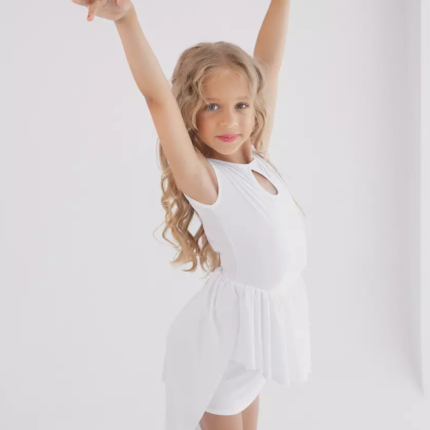Table of Contents
Introduction
Right, let’s talk about dance shorts! Because while leotards often steal the spotlight, what your young dancer wears on their bottom half is just as crucial for comfort, movement, and, yes, even confidence! I’m Anna Babiy, owner of Fashion Dance, and with 12 years in the business (and a lifetime of dance before that!), I’ve seen firsthand how the right pair of shorts can make all the difference. We are, after all, discussing kids dance shorts, or, to put it another way, dance shorts for kids.
This isn’t just about throwing on any old pair of shorts. We’re talking about finding comfortable dance shorts that allow for maximum flexibility in dance. Because, let’s face it, whether it’s a graceful arabesque or a high-energy hip-hop move, your child needs to be able to move freely and without restriction. This is where a key item in children’s dancewear comes into its own. It’s about finding that perfect balance between practicality, style, and, of course, that all-important freedom of movement. So, let’s dive in and explore the wonderful world of dance shorts – from the snug to the loose, the short to the… well, not quite so short!
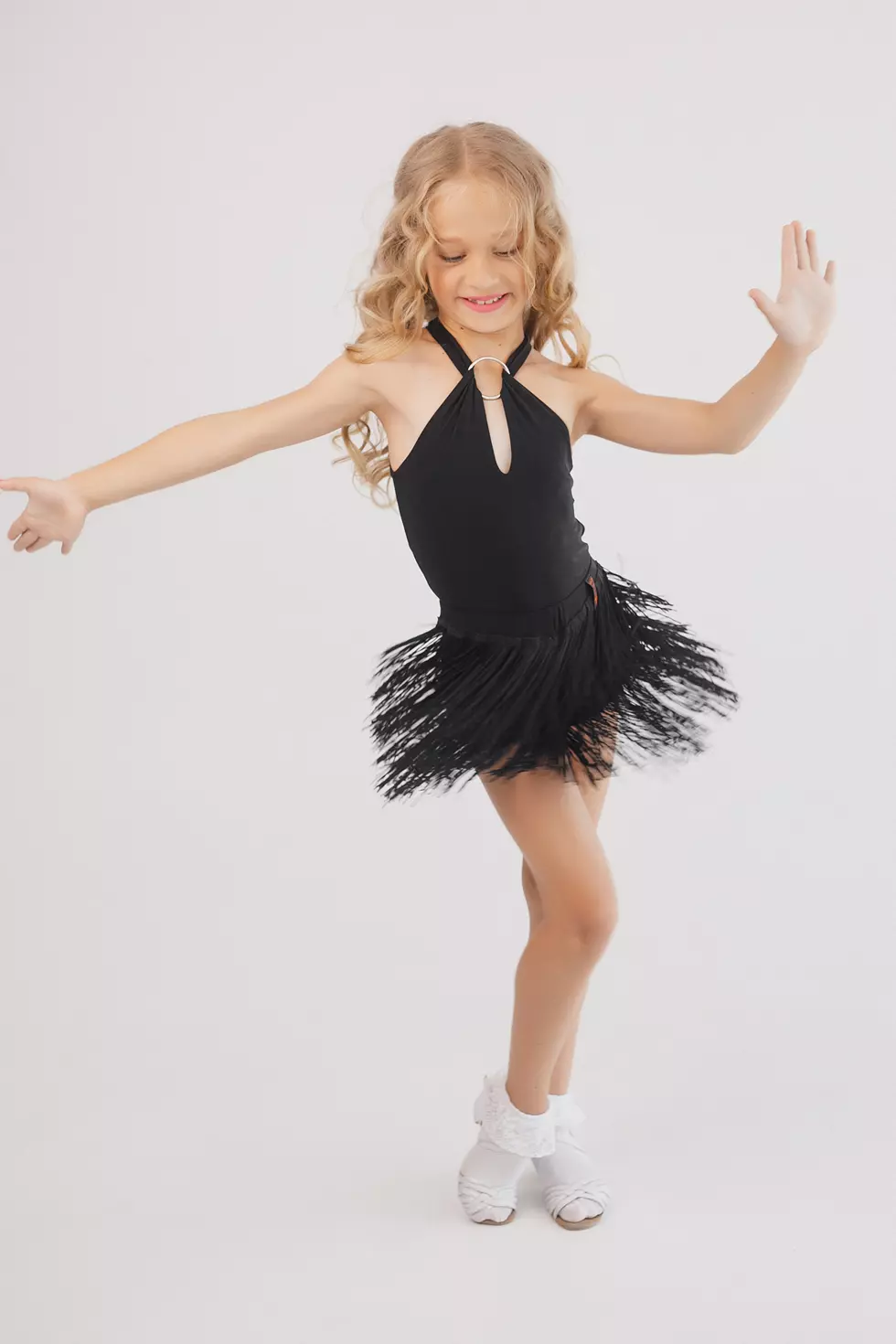
Section 1: Different Styles of Dance Shorts
Okay, so we’ve established that dance shorts are important. But, just like leotards, they come in a dizzying array of styles! And, believe me, the choices can feel a little overwhelming at first. But don’t worry, that’s what I’m here for! Think of this section as your friendly guide to the main types of dance shorts you’re likely to encounter.
We’ll explore the different cuts, lengths, and overall looks, and I’ll share some insights (gleaned from years of experience, both personal and professional!) on which styles tend to work best for different dance genres. From the super-short “booty shorts” to the more modest bike shorts, and even the looser styles favored in hip-hop, we’ll cover the main options. So, let’s get started and unravel the mysteries of dance short styles!
Subsection 1.1: Booty Shorts
Alright, let’s start with the shortest of the short: booty shorts! These are, as the name rather explicitly suggests, very short dance shorts. We’re talking short dance shorts that are designed for maximum leg exposure, showing leg lines to their best advantage. And, yes, they do leave very little to the imagination!
Now, before you raise an eyebrow, there are good reasons why these shorts are popular, particularly in certain dance styles. In genres like jazz and contemporary, where the lines of the legs are crucially important, booty shorts allow judges and instructors to see every muscle, every extension, every pointe. They provide completely unrestricted movement, and they’re undeniably cool and comfortable in a hot studio.
Here’s what you need to know:
- Maximum Leg Exposure: This is the defining characteristic. Booty shorts are all about showcasing the legs and allowing for a full, unrestricted range of motion.
- Popular in Jazz and Contemporary: You’ll see them everywhere in these dance styles, for the reasons mentioned above.
- Not for Everyone: They’re definitely not for every dancer, or for every dance style. Comfort and confidence are key, and some dancers simply prefer more coverage.
- Fit is Crucial: Because they’re so short, a secure and comfortable fit is essential. They should stay in place without riding up or digging in.
- Can be worn over: Some dancers prefer wearing booty shorts over the tights.
So, while they might seem a bit daring at first glance, booty shorts serve a very specific purpose in the dance world. They’re a tool for showcasing technique, for maximizing freedom of movement, and, for many dancers, for feeling confident and empowered. But, as always, it’s about personal preference and what makes your young dancer feel their best.
Subsection 1.2: Bike Shorts
Okay, let’s move on to a slightly more modest option: bike shorts! These are, essentially, longer dance shorts that provide added coverage, typically extending to mid-thigh or just above the knee. Think of them as the… slightly more conservative cousins of booty shorts. They offer a more versatile style, suitable for a wider range of dance genres and body types.
Bike shorts are a great choice for dancers who prefer a bit more coverage, or for those who are looking for a more comfortable and secure fit. They’re also a popular option for younger dancers, or for those who are just starting out in dance.
Here’s a breakdown of their key features:
- Added Coverage: The longer length provides more coverage than booty shorts, which can be a plus for dancers who feel self-conscious or who simply prefer a more modest look.
- Versatility: Bike shorts are suitable for a wide range of dance styles, including ballet, jazz, contemporary, and even some hip-hop. They’re a true all-rounder.
- Comfort and Security: The snug fit and longer length provide a feeling of security and support, and they’re less likely to ride up or shift around during movement.
- Layering Potential: They can be worn on their own, or layered under skirts or dresses for added warmth or coverage.
- Different length: Bike shorts also come in different length, the most popular are till the middle of the thight, and a bit upper the knee.
So, if booty shorts feel a bit too revealing, or if you’re simply looking for a more versatile and comfortable option, bike shorts are definitely worth considering. They offer a great balance of coverage, freedom of movement, and style, making them a popular choice for dancers of all ages and levels.
Subsection 1.3: Loose-Fitting Shorts
And now, for something completely different: loose-fitting shorts! These are the rebels of the dance shorts world, the ones that break away from the snug, form-fitting mold. Loose dance shorts offer a relaxed fit, prioritizing freedom of movement above all else. They’re often associated with hip-hop and other street-inspired dance styles, but they can also be a comfortable choice for other genres.
Unlike booty shorts or bike shorts, which are designed to hug the body, loose-fitting shorts allow for a much greater range of motion. They’re typically made from lightweight, breathable fabrics, and they often feature a drawstring or elastic waistband for a comfortable and adjustable fit.
Here’s what sets them apart:
- Maximum Freedom of Movement: This is the key advantage. The loose fit allows for unrestricted movement in all directions, making them ideal for styles that involve large, dynamic movements.
- Often Used in Hip-Hop: You’ll see them everywhere in hip-hop classes, where that freedom of movement and relaxed style are essential.
- Comfort and Breathability: The loose fit and lightweight fabrics make them incredibly comfortable, especially in hot weather.
- Streetwear-Inspired Style: They often have a more casual, streetwear-inspired look, which appeals to many dancers.
- Can Be Layered: They can be worn over tights or leggings for added warmth or coverage.
While they might not be the best choice for styles where precise leg lines are crucial (like ballet), loose-fitting shorts offer a fantastic alternative for dancers who prioritize comfort and freedom of movement. They’re a testament to the fact that dancewear can be both functional and stylish, and that there’s a perfect pair of shorts out there for every dancer and every dance style. It is also worth mentioning, that pockets can be very handy!
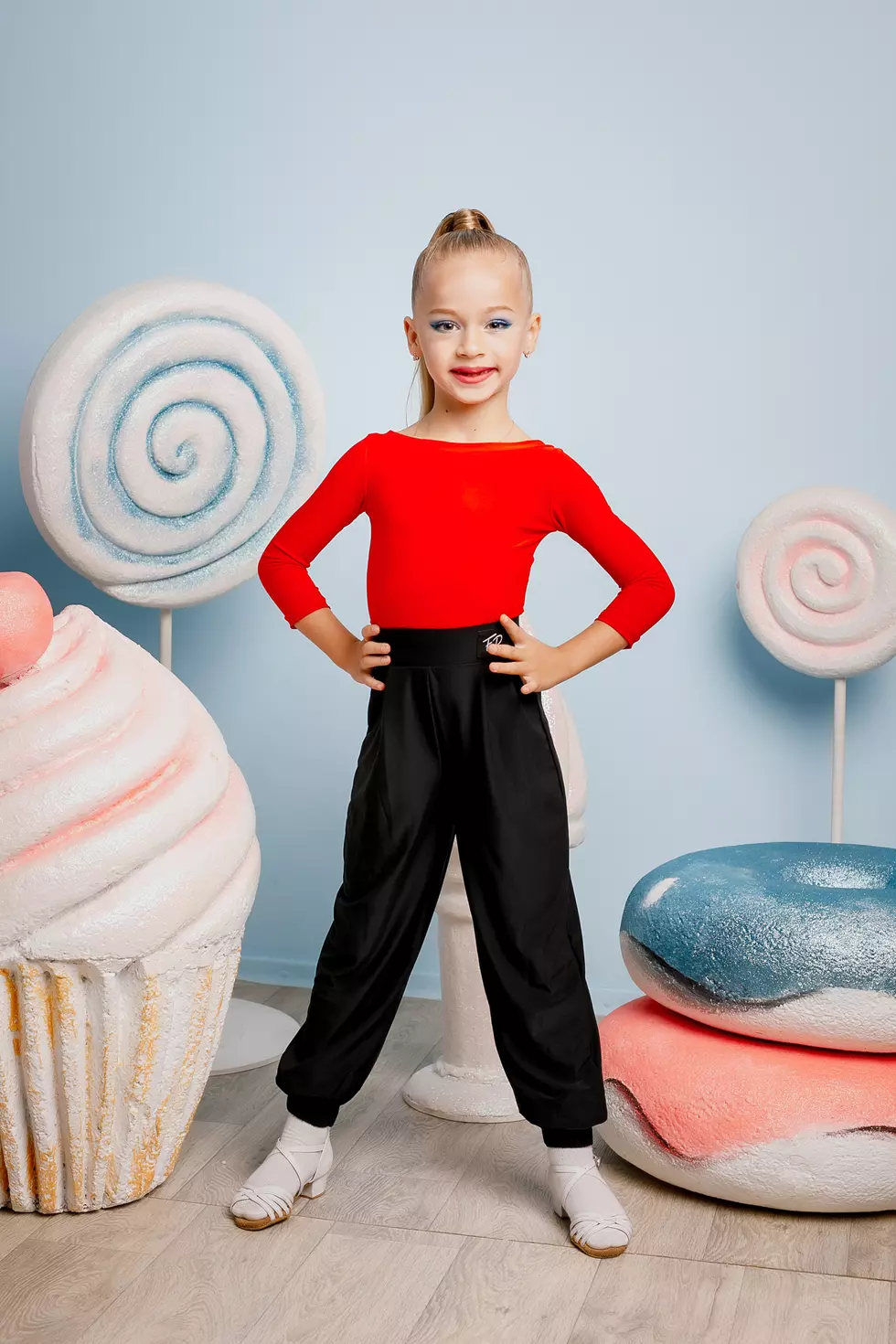
Section 2: Fabric and Fit: Key Considerations
Right, so we’ve explored the styles of dance shorts, from the super-short to the loose and flowing. But, just like with leotards, what those shorts are made of, and how they fit, are just as important as how they look. Trust me, after 12 years in this business, and a lifetime of dancing, I’ve learned that fabric and fit can make or break a dancer’s experience!
This section is all about the practical considerations that go into choosing the right dance shorts. We’re talking about breathability, moisture-wicking properties, stretch, and, of course, finding that perfect, comfortable fit that allows for unrestricted movement. Because, let’s face it, even the cutest pair of shorts is useless if it’s digging in, riding up, or restricting your young dancer’s ability to move! So, let’s dive into the nitty-gritty details of fabric and fit, and make sure your dancer is ready to conquer the studio in comfort and style!
Subsection 2.1: Breathable and Moisture-Wicking Fabrics
Okay, let’s talk sweat. Because, let’s be honest, dancing is hard work! Whether it’s a ballet class, a jazz routine, or a hip-hop cypher, your young dancer is going to work up a sweat. And shorts that don’t breathe? Well, that’s just a recipe for discomfort, stickiness, and a generally unpleasant experience. That’s why choosing shorts made from breathable fabrics and moisture-wicking materials is absolutely essential.
What do I mean by “breathable” and “moisture-wicking”? I mean fabrics that allow air to circulate, and that draw moisture away from the skin, helping it evaporate quickly. This keeps the dancer feeling cooler, drier, and much more comfortable, even during intense activity. This is not something you want to compromise on!
So, which fabrics are the champions of breathability and moisture-wicking? Let’s take a look:
- Cotton: Good old, reliable cotton! It’s soft, comfortable, and naturally breathable. However, it can hold onto moisture a bit more than some synthetic fabrics, so it’s often blended with other materials for dancewear. A cotton blend is often a great choice for younger dancers or those with sensitive skin.
- Lycra/Spandex: These are the miracle ingredients that give dance shorts their stretch and recovery. Lycra and spandex are essentially the same thing (just different brand names), and they’re crucial for allowing a full range of movement. They also tend to be quite good at wicking away moisture.
- Polyester: A synthetic fabric known for its durability, wrinkle resistance, and moisture-wicking properties. It’s often blended with cotton or Lycra for added comfort and stretch.
- Supplex Nylon: This is a special type of nylon that’s engineered to feel soft and cottony, while still offering excellent breathability and moisture-wicking.
You’ll often find dance shorts made from a blend of these fabrics, combining the best qualities of each. For example, a cotton-Lycra blend offers the softness and breathability of cotton, with the stretch and moisture-wicking properties of Lycra. The key is to look for fabrics that are specifically designed for athletic wear, as these will typically offer the best performance in terms of keeping cool and dry. Read the labels, do your research, and prioritize fabrics that will keep your young dancer comfortable and happy, even when they’re working up a sweat!
Subsection 2.2: Finding the Right Fit
Okay, we’ve tackled the fabric, now let’s talk about fit. Because even the most breathable, moisture-wicking shorts won’t do any good if they’re too tight, too loose, or just plain uncomfortable! Finding the comfortable fit is absolutely crucial for allowing your young dancer to move freely and confidently, without any distractions. We need to make sure we are avoiding restrictions.
Here’s what to keep in mind when choosing the right size and fit for dance shorts:
- Snug, But Not Tight: The shorts should fit snugly against the body, without any gaping or looseness. But they shouldn’t be so tight that they restrict movement, dig into the skin, or create visible lines. You should be able to pinch a small amount of fabric, but not a handful.
- Secure Waistband: The waistband is key! It should be snug enough to keep the shorts securely in place, without being so tight that it’s uncomfortable. A wide, elastic waistband is often a good choice, as it distributes pressure evenly. A drawstring can also provide added adjustability. We need to make sure we have a secure waistband.
- Leg Openings (For Fitted Shorts): For bike shorts or booty shorts, the leg openings should be snug enough to stay in place, but not so tight that they cut off circulation or cause discomfort.
- Length (For Loose-Fitting Shorts): For loose-fitting shorts, the length is more a matter of personal preference and style. However, make sure they’re not so long that they interfere with movement or create a tripping hazard.
- Consider Growth: Kids grow fast! When choosing dance shorts, it’s often a good idea to buy a size that allows for a little bit of growth, as long as it doesn’t compromise the fit too much. We need to be allowing for growth.
- Check the seams: Make sure, that seams are soft.
The best way to ensure a good fit is to measure your dancer’s waist and hips, and compare those measurements to the size chart provided by the manufacturer. Don’t just rely on their usual clothing size, as dancewear sizing can sometimes be different. And, if possible, have your dancer try on the shorts and move around in them to make sure they’re comfortable and allow for a full range of motion. A well-fitting pair of dance shorts is an investment in their comfort and their performance!
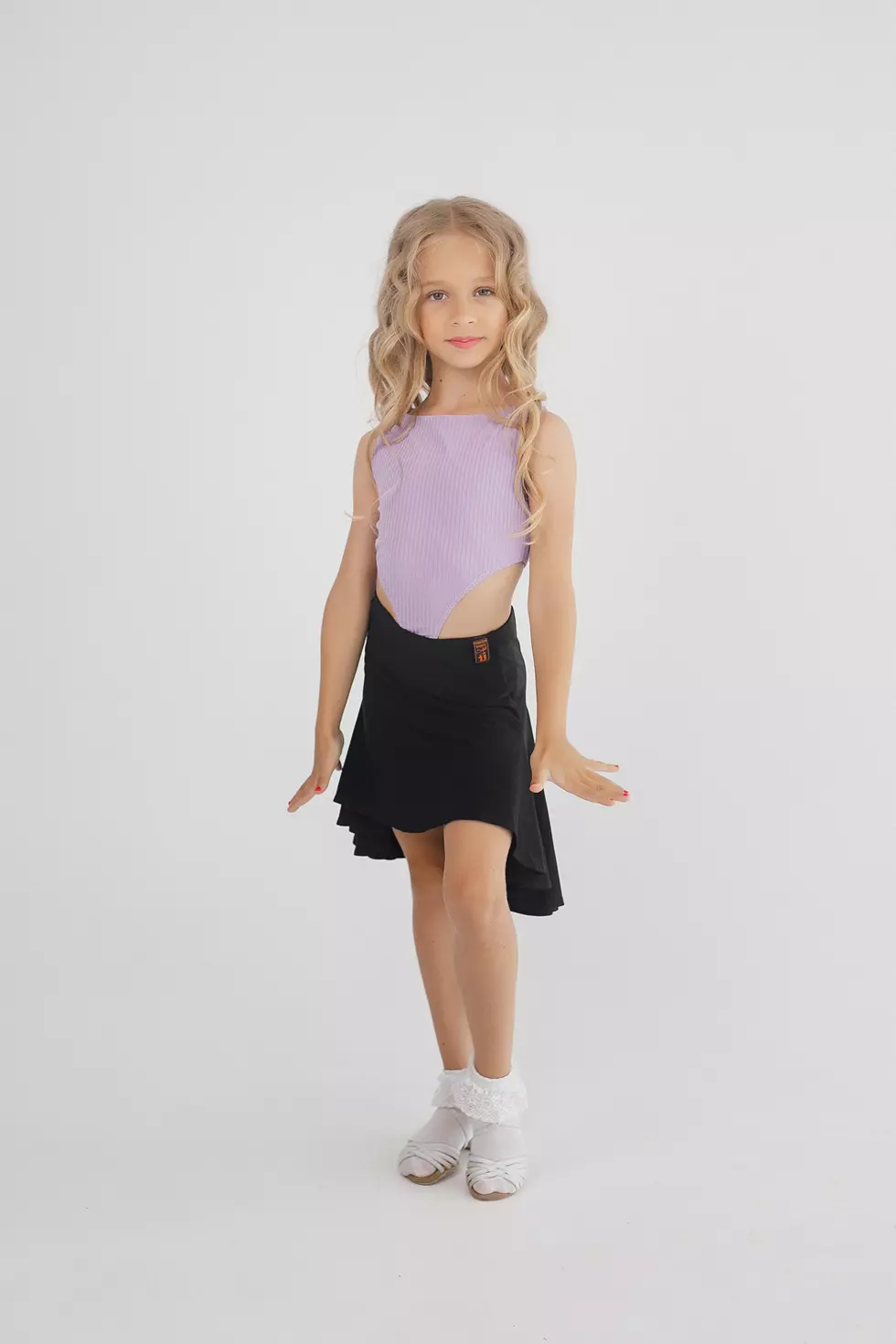
Section 3: Dance Shorts for Different Disciplines
Right, so we’ve covered the basics of dance shorts – the styles, the fabrics, the fit. Now, let’s get a little more specific. Because, while a pair of bike shorts might work for just about any dance genre, certain styles of shorts are more commonly associated with certain types of dance. And there are often good reasons for that!
This section is all about exploring the nuances of dancewear conventions across different disciplines. We’ll look at which types of shorts tend to be favored in jazz, contemporary, hip-hop, and even ballet (as warm-up attire), and why. Think of it as your guide to understanding the unspoken (and sometimes very spoken!) rules of the dance studio. Now, I’m not saying you have to follow these conventions – personal expression is always key! – but understanding them can certainly help you make informed choices and ensure your young dancer feels comfortable and confident in their class. So, let’s take a little tour of the dance world, one pair of shorts at a time!
Subsection 3.1: Jazz and Contemporary Dance Shorts
Okay, let’s start with jazz and contemporary – two dance styles that often share similar preferences when it comes to shorts. Both genres emphasize expressive movement, dynamic choreography, and showcasing the lines of the body. Therefore, jazz dance shorts and contemporary dance shorts tend to have a lot in common. Showcasing leg lines and flexibility are main priorities.
Here’s what you’ll typically find in a jazz or contemporary class:
- Booty Shorts: These are hugely popular in both jazz and contemporary, for the reasons we discussed earlier: they allow for maximum leg exposure, showcasing every muscle and extension.
- Bike Shorts: A very common choice, offering a bit more coverage than booty shorts while still allowing for a full range of movement. They’re a versatile option that works well for both genres.
- Form-Fitting Styles: In general, jazz and contemporary dance shorts tend to be form-fitting, hugging the body and allowing the dancer’s movements to be clearly seen.
- Breathable Fabrics: As always, breathability and moisture-wicking properties are essential, given the high-energy nature of these dance styles.
- Solid Colors or Simple Patterns: While there’s more room for individual expression than in ballet, jazz and contemporary dance shorts often tend to be in solid colors or simple patterns, rather than anything too busy or distracting.
- Can be worn over: It is a common practice to wear shorts over the tights.
The overall aesthetic is one of sleekness, functionality, and showcasing the dancer’s athleticism. The shorts are there to support the movement, to allow for freedom of expression, and to highlight the lines of the body. So, while there’s always room for personal preference, these guidelines can help you choose shorts that are both stylish and appropriate for jazz and contemporary dance.
Subsection 3.2: Ballet Dance Shorts (Warm-ups)
Okay, let’s talk about ballet… and shorts! Now, you might be thinking, “Shorts in ballet? Surely not!” And you’d be mostly right. During a typical ballet class, especially at the barre, you’re unlikely to see dancers in shorts. Traditional ballet attire favors tights and leotards, showcasing the lines of the body and allowing for precise movements.
However, there is a place for shorts in ballet: as ballet warm-up shorts. These are typically worn over tights, providing added warmth during the initial stages of class, before the muscles are fully warmed up. They are layering over tights, and providing comfortable fit.
Here’s what you need to know about ballet warm-up shorts:
- Worn Over Tights: This is the key point. They’re not meant to be worn on their own, but rather as an extra layer of warmth over tights.
- Loose or Fitted Styles: Both loose-fitting and fitted (bike short style) warm-up shorts are common. The choice often depends on personal preference.
- Soft, Breathable Fabrics: Comfort is key, so warm-up shorts are typically made from soft, breathable fabrics like cotton blends, fleece, or lightweight knits.
- Easy to Remove: They should be easy to pull on and off over tights, without disrupting the dancer’s flow.
- Neutral Colors: Unlike hip-hop shorts, ballet warm-up shorts tend to be in neutral colors like black, gray, or pink, to match the traditional ballet aesthetic.
Think of them as a cozy, practical addition to the ballet wardrobe, providing that extra layer of warmth when needed. They’re not about showcasing the legs or making a fashion statement; they’re simply about keeping the muscles warm and preventing injuries. So, while you might not see them throughout the entire class, ballet warm-up shorts play a valuable role in the dancer’s routine.
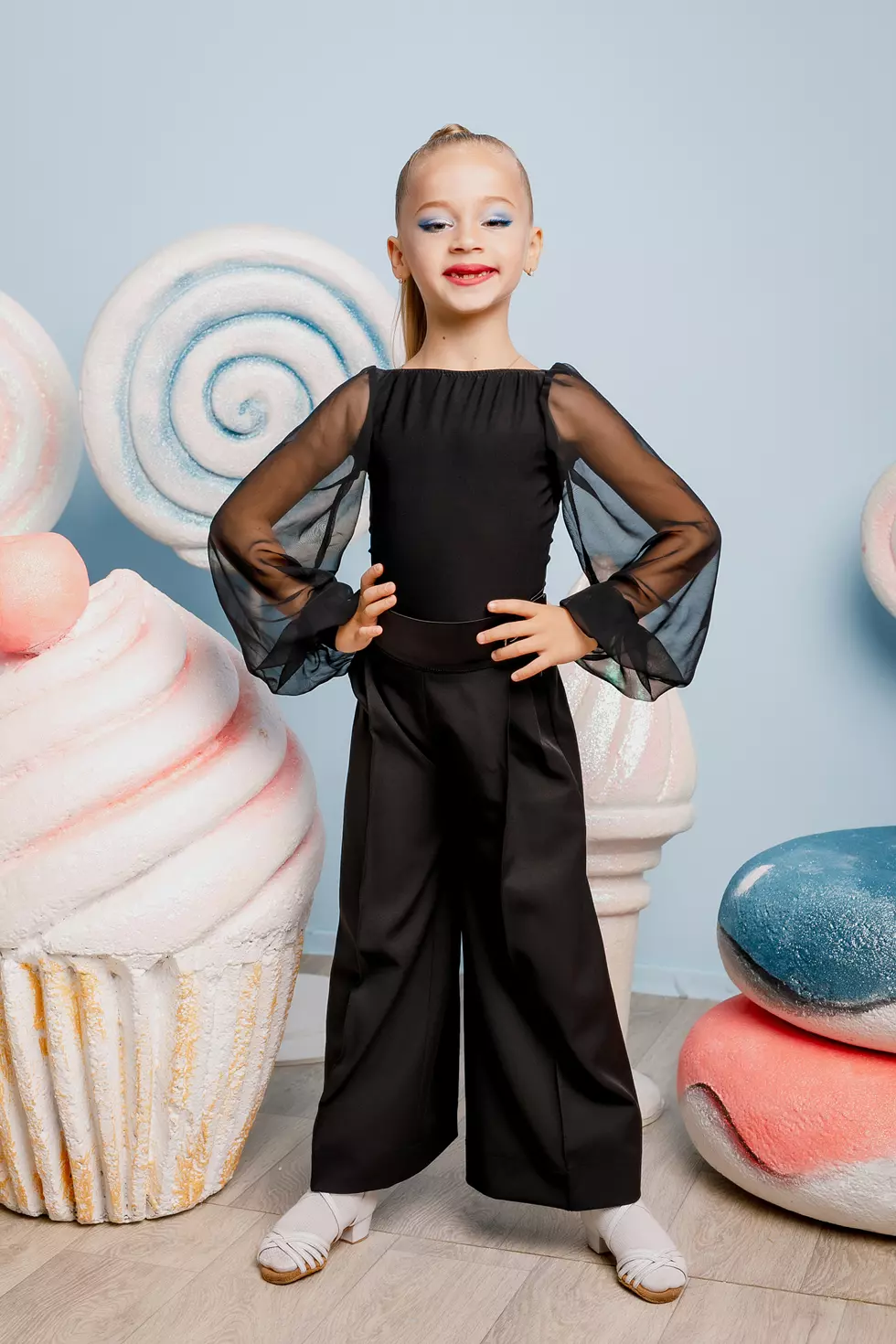
Section 4: Where to Buy Kids Dance Shorts
Right then! We’ve covered styles, fabrics, fit, and even how shorts fit into different dance disciplines. You’re practically a dance shorts guru by now! But… where do you actually find these essential pieces of dancewear? Well, that’s what this section is all about. Because, honestly, the search for the perfect pair of dance shorts can sometimes feel like a bit of an adventure!
Whether you’re a fan of the convenience of online shopping or you prefer the personalized touch of a local boutique, there are plenty of options out there. I’ll share some of my go-to resources, both online and off, and offer some tips for navigating the world of dancewear retail. From specialized dancewear stores to larger online marketplaces, we’ll explore the best places to find those perfect dance shorts that will keep your young dancer comfortable, confident, and ready to move! Let’s get shopping!
Subsection 4.1: Online Dancewear Retailers
Okay, let’s dive into the digital world! Online dancewear retailers offer a massive selection, often at competitive prices, and the convenience of shopping from your sofa – what’s not to like? Online stores provide a wide selection and convenient shopping, a major win for busy parents (and let’s be real, who isn’t a busy parent?). Plus the ability of comparing prices is very handy.
Here are the undeniable perks of shopping online:
- Huge Variety: Online retailers typically stock a far broader range of styles, sizes, and brands than brick-and-mortar stores. You’re much more likely to find exactly what you’re looking for, even if it’s something a bit niche.
- Competitive Pricing: Online stores often have lower overheads than physical shops, which can mean lower prices for you.
- 24/7 Shopping: You can browse and buy whenever it suits you, day or night, without leaving the house. A huge bonus for time-strapped families.
- Customer Reviews: Many online retailers include customer reviews, which can be incredibly helpful in judging the quality, fit, and overall satisfaction with a particular pair of shorts.
- Detailed Size Guides: Reputable online dancewear sellers provide comprehensive size charts, often with specific measurements for each garment. This helps you select the right size, reducing the chances of needing to return items.
But, a few things to bear in mind:
- No Try-Ons: This is the main drawback. You’re relying on size charts and reviews, and there’s always a possibility the shorts won’t fit perfectly.
- Shipping & Returns: Factor in shipping costs when comparing prices, and always check the retailer’s return policy before you buy.
- Check the seller: Make sure, that you buy from trusted seller.
Do your homework, read those reviews, compare prices, and don’t hesitate to contact the retailer’s customer service if you have any questions. A good online store will be more than happy to help!
Subsection 4.2: Local Dancewear Shops
Now, while the internet offers unparalleled convenience, there’s still a strong case to be made for visiting a local dancewear shop. Local boutiques often provide personalized service and, crucially, the chance to try on shorts before you commit to buying. This can be particularly valuable for growing children, or for those new to dance who are unsure of their size or preferred style.
Here’s why you might want to consider a local shop:
- Expert Guidance: Staff at dancewear stores are usually knowledgeable about dance and dancewear, and can offer expert advice on fit, style, and fabric choices. They can help you find the ideal shorts for your dancer’s needs and body type. This personalized service is a real asset, especially for beginners.
- The Try-On Factor: This is the biggest advantage. Being able to try on shorts before buying ensures a perfect fit and removes the uncertainty of online shopping.
- Supporting Local Businesses: Shopping at a local dancewear store supports your community and helps ensure these valuable resources remain available.
- Instant Gratification: You can take your purchase home immediately, no waiting for shipping.
- See and touch: You have ability to see color in real life, and to touch and feel the fabric.
However, there are a few potential downsides:
- Smaller Selection: Local stores typically have a more limited selection compared to online retailers.
- Potentially Higher Prices: Prices might be slightly higher due to increased overhead costs.
- Less Convenient Hours: You’ll need to visit the store during their opening hours, which might not always fit your schedule.
If you have a local dancewear shop nearby, it’s definitely worth checking out, especially if you’re new to dance or if your dancer needs a particularly precise fit. The personalized service and the opportunity to try on shorts can make a big difference! You might even discover a new favorite brand or a hidden gem in your local dance community.
Conclusion
So, there you have it – a comprehensive exploration of the world of kids’ dance shorts! From the barely-there booty shorts to the relaxed fit of hip-hop styles, we’ve covered different cuts, fabrics, fit considerations, and how they all relate to various dance disciplines. Hopefully, you now feel much more equipped to choose the right dance shorts – ones that prioritize comfort and flexibility, ultimately supporting young dancers in their passion.
Remember, the ideal pair of dance shorts is more than just a piece of clothing; it’s a tool that enables movement, boosts confidence, and helps your dancer feel their best. It’s about striking that perfect balance between practicality, style, and that all-important freedom to move. Whether it’s the snug fit of bike shorts for ballet, the loose freedom of hip-hop shorts, or the leg-showcasing design of booty shorts for jazz, the goal is to empower your dancer to express themselves fully.
Don’t be afraid to experiment, to try different styles, and to let your dancer’s personality and the demands of their chosen dance form guide your choices. And above all, remember that the best shorts are the ones that make your dancer feel comfortable, confident, and ready to take on any challenge, one leap, spin, or plié at a time.
Need more information on kids’ dancewear? Check out our complete guide: Kids Dancewear: A Guide to Finding the Perfect Fit and Style.
1. How often should I wash dance shorts, and what’s the best way to do it?
How often you wash dance shorts depends on how frequently they’re worn and how much your child sweats during practice. Generally, it’s best to wash them after each use, especially if your child has been sweating heavily. This prevents bacteria buildup and odors from setting in. If the shorts aren’t visibly dirty or smelly after a light practice, you might be able to air them out and wear them once more before washing, but frequent washing is generally recommended for hygiene.
The best way to wash most dance shorts is to follow the care label instructions on the garment. However, a good general rule is to wash them in cold water with a mild detergent. Avoid using bleach or fabric softeners, which can damage the fabric and elastic. Hand washing is the gentlest method, but many dance shorts can be machine washed on a delicate cycle. If machine washing, it’s a good idea to place the shorts in a mesh laundry bag to prevent snagging.
Always air dry dance shorts whenever possible. Lay them flat or hang them to dry, away from direct sunlight. Avoid using a tumble dryer, as the heat can shrink or damage the fabric, especially materials like Lycra or spandex. If the care label does permit tumble drying, use the lowest heat setting and remove the shorts promptly.
By properly washing and drying your child’s dance shorts, you can help maintain their quality, elasticity, and overall appearance, ensuring they last through many dance practices.
2. My child is between sizes. Should I size up or down for dance shorts?
When your child is between sizes for dance shorts, it’s generally recommended to size up, particularly for growing children. Here’s a breakdown of the reasoning, and some factors to consider:
Why Size Up (Usually Preferred):
Children, especially young dancers, tend to grow quickly. Sizing up provides some room for growth, extending the usable life of the shorts. Dance shorts that are too small can be restrictive, uncomfortable, and may hinder movement. A slightly larger size will generally allow for better freedom of motion. Tight shorts can also cause chafing or digging in at the waist or leg openings. If the shorts will be worn over tights or a leotard, sizing up can provide a bit of extra room for those layers without feeling too constricted.If buying a relaxed-fit short, a slightly bigger size will increase this effect.
When Sizing Down Might Be Considered (Less Common):
If the shorts are made from an exceptionally stretchy fabric and the brand specifically recommends sizing down for a very snug fit (this would usually be indicated in the product description or reviews), then you might consider it, but only if you’re confident it won’t be too restrictive. Some dancers prefer a second-skin feeling.
Key Considerations Before Deciding:
Read online reviews for any comments about the shorts running small or large. This can provide valuable insights. Some dancewear brands tend to run smaller or larger than others. Familiarize yourself with the brand’s sizing if possible. Take your child’s waist and hip measurements and compare them to the specific size chart provided by the retailer. Don’t just rely on their usual clothing size. Ensure the retailer has a flexible return policy in case the chosen size doesn’t work out.
Ultimately, prioritize comfort and freedom of movement. A slightly larger pair of dance shorts is generally preferable to a pair that’s too small, as it’s more likely to accommodate growth and allow for unrestricted dancing. A slightly too-big pair can sometimes be adjusted with a drawstring or a few quick stitches, while shorts that are too small are simply unwearable.
3. Are there any eco-friendly options for dance shorts?
Yes, absolutely! As awareness of environmental issues grows, so does the availability of eco-friendly options for dance shorts. These options focus on more sustainable materials and ethical production practices.
Sustainable Materials:
Choosing dance shorts made from organic cotton means avoiding harmful pesticides and synthetic fertilizers that are commonly used in conventional cotton farming. Some brands are using innovative fabrics made from recycled materials, such as recycled polyester made from plastic bottles. This reduces landfill waste and the need for new resources. Bamboo is a fast-growing, renewable resource that requires less water and pesticides than cotton. It is known for softness, breathability, and moisture-wicking. Modal and Tencel (Lyocell) are made from sustainably sourced wood pulp and created with less harmful chemicals.
Ethical Production:
Look for brands transparent about their manufacturing processes and ensure safe working conditions and fair wages for their workers. Choosing dance shorts made locally or in countries with stricter environmental and labor laws can support local economies and lower the carbon footprint from transport. Certain brands employ techniques to reduce fabric waste, such as careful pattern cutting.
Certifications:
GOTS (Global Organic Textile Standard) is for organic cotton and other natural fibers. Oeko-Tex Standard 100 is a certification that shows that a fabric does not contain any harmful chemicals.
Extending the Life of Your Dance Shorts:
Purchasing pre-owned dance shorts is a great way to reuse and reduce waste. Following the care instructions on the label, such as washing in cold water and air drying, helps to prolong the life of your garments and reduces the need for frequent replacements.
By looking for brands and materials that prioritize sustainability, dancers can reduce their environmental impact, and support ethical production practices.
4. Can dance shorts be worn for activities other than dance?
Yes, many styles of dance shorts can be worn for activities other than dance, offering a comfortable and versatile option for various athletic and casual pursuits. The key is to choose shorts that are appropriate for the specific activity and that reflect your personal style.
Activities Where Dance Shorts Can Work Well:
Dance shorts, especially those made from moisture-wicking and breathable fabrics, are well-suited for other types of workouts, such as yoga, Pilates, barre, running, or gym sessions. Look for shorts that provide adequate coverage and support for the activity. Certain types of dance shorts, particularly those made from quick-drying fabrics like nylon or polyester, can double as swimwear or beach cover-ups. Softer, more relaxed styles of dance shorts, such as jersey shorts or loose-fitting shorts, can be worn as casual wear or loungewear. Pair them with a t-shirt, tank top, or sweater for a comfortable and stylish look. Bike shorts or form-fitting dance shorts can be worn as a comfortable and practical layer under skirts or dresses, providing coverage and preventing chafing.
Considerations for Non-Dance Activities:
Coverage: Make sure the shorts provide adequate coverage for the activity. Booty shorts, for example, might not be appropriate for all situations. Support: Choose shorts that offer the right level of support for the activity. High-impact activities might require more supportive shorts with compression features. Fabric: Opt for fabrics that are appropriate for the weather and the level of activity. Breathable and moisture-wicking fabrics are ideal for workouts, while softer fabrics might be more comfortable for lounging. Style: Consider the overall style of the shorts and whether they fit the aesthetic of the activity. Modesty: Bike shorts are fine, but make sure that booty shorts are layered.
Examples:
A pair of black bike shorts can be worn for a yoga class, paired with a sports bra and a tank top. A pair of loose-fitting jersey shorts can be worn for a casual day at the beach, paired with a swimsuit top and a cover-up. A pair of form-fitting dance shorts can be worn under a skirt or dress for added coverage and comfort.
By choosing the right style and fabric, dance shorts can be a versatile addition to your wardrobe, offering comfort, flexibility, and style for a variety of activities beyond the dance studio.
